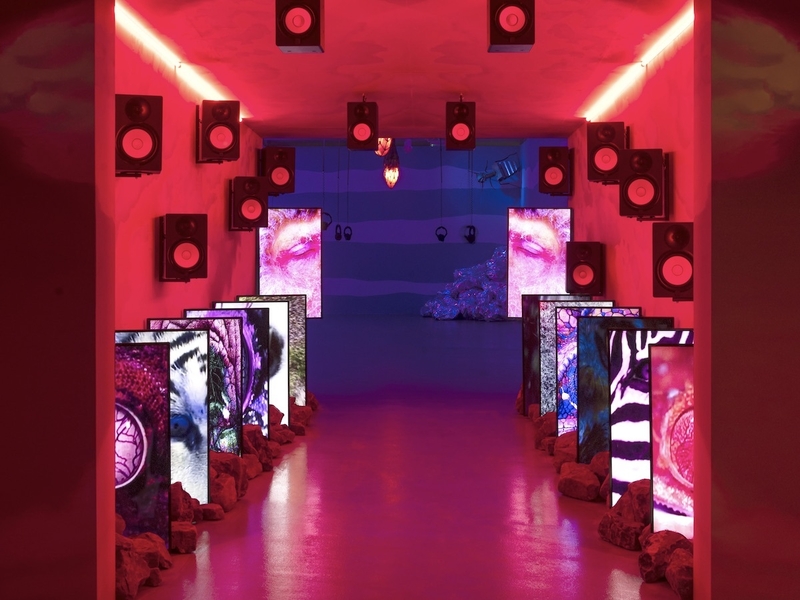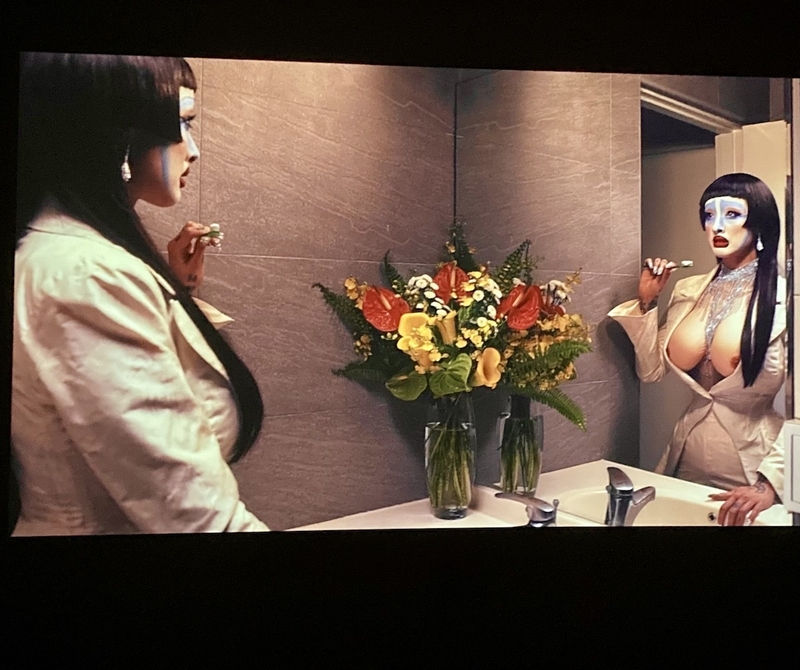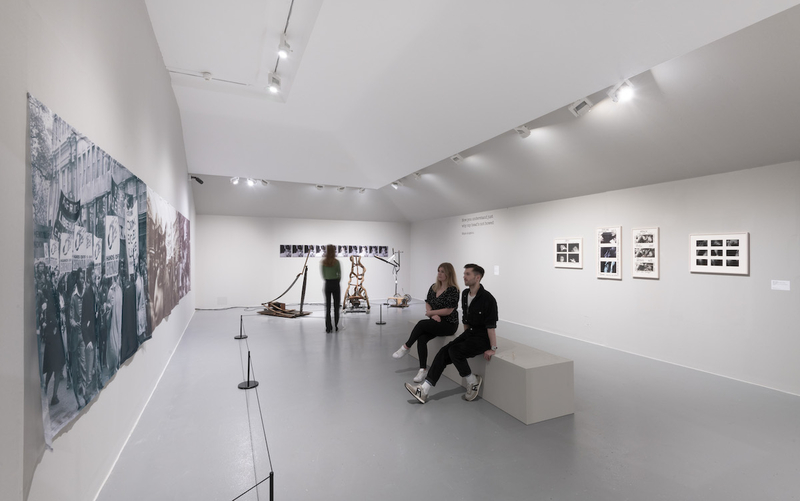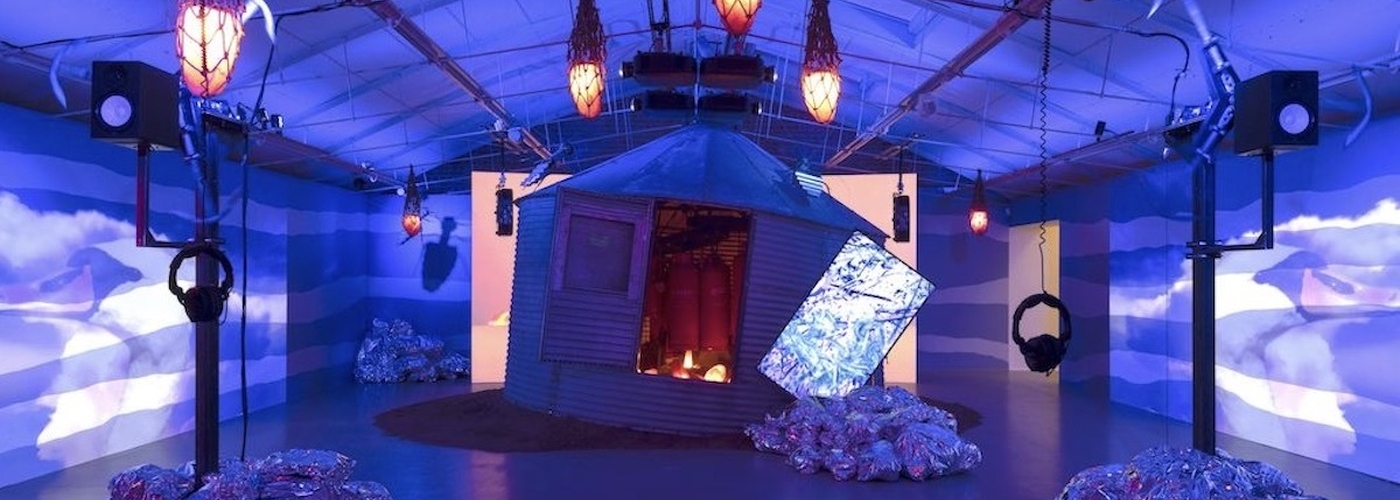Worlds within worlds - Carol Emmas contemplates the bigger picture at Tate Liverpool
The exploration of identity and consciousness are the overriding themes for the 2022 Turner Prize, which is back in Liverpool after 15 years. The experience we want out of a good Turner Prize is one where the artists speak to each other in a way that delivers a profound message indicative of our times. Also to emerge with a different mindset from when you went in. Glad to say, this year’s event has delivered on both fronts, which hasn’t always been the case.
Phillipson doesn’t hesitate to point out that we’re never that far from complete disintegration.
Like a post-COVID splash that seems relevant after so much introversion, the chosen artists demonstrate how we relate to the history of our world, ourselves and others. How we move through our world, and our responsibility to it which is increasingly vital.

At the most surreal mind-bending of times (and there are a few), the exhibition gives rise to science fantasy and fiction meanderings that question our existence both internally and externally. It puts the whole planet and us as humans under a magnifying glass.
The two artists who seemingly honed in on those mind meanderings and look at the bigger picture are Heather Phillipson and Sin Wai Kin. They have aimed straight for contemplating consciousness and its wonderful head-fuckery.

Where to start with Phillipson? Through RUPTURE NO 6: biting the blowtorched peach, 2022, she describes her work as "quantum thought experiments" and pushes us to question our smallness and fragility by asking, “what keeps us alive out here in the cosmos?” She hones in on that disjunct between wakefulness and sleep, where our minds are filled with random images that can make us feel more like a computer simulation.

Phillipson describes us as a “collection of dislocated states” and a thematically colourful presentation belies a much darker message. Messing with the environment also messes with us on so many different levels; “our earth is like a flambé tomato” is voiced through her soundscape.
Phillipson doesn’t hesitate to point out that we’re never that far from complete disintegration and at the mercy of forces much greater than ourselves, both physically and via our mental hardwiring. Using video, sculpture, installation, poetry, digital media and music composition to illustrate the work, the words and soundscapes are pieces of music in their own right.


One of the youngest ever Turner nominees, age 31, Sin Wai Kin also takes us into surreal dreamscapes that question identity. Through science fantasy, they have created characters that have taken on relationships of their own where duality and different binaries are explored.
In It’s Always You, 2021, Sin Wai Kin designs four boyband members who have transcended constructed binaries which she links through to capitalism. The arists says, “as a construct in all boy bands there is always the sexy one, the serious and the playful one”. Manufactured to capitalise and monetise on the outward reflection, “I see myself in you, reflected back at me,” is bounced around like a game of table tennis.
A Dream of Wholeness in Parts, 2021, is a mesmerising 20-minute-long film that contemplates a post-apocalyptic world. Three characters test the concepts of consciousness, reality and duality, “in the dream - you were a dream.” Lives within lives are also explored through the eating of cooked animals, “I ate many beings, crushing them in my body.”

Originally from Montserrat, the next shortlisted nominee Veronica Ryan explores her childhood memories of a displaced life. There’s a gentleness to Ryan’s work that explores generational relationships.
Through Multiple Conversations 2019–21 and Along a Spectrum 2021, made during a residency at Spike Island, she explores the tactile feeling of fabrics and how close to flesh they are. She’s a collector, a maker a recycler and an archivist of all things potentially useful from the make-do-and-mend philosophy.
Through her collection of objects, her exhibition speaks to us of day-to-day life and feminine and family closeness cemented through displacement. Ryan explores everything that is familiar to us as human beings. She keeps those things close by crocheting them into hanging statements of meaningful ephemera.

First and foremost a photographer but also researcher, Ingrid Pollard has built up an archive of work that is used to tell the story of otherness in the landscape of all that is British.
With additional use of sculpture, film and sound, Seventeen of Sixty Eight, 2018, is developed from many years of research into racist depictions on pub signs, ephemeral objects, passages within literature and colonial imagery. More about giving clues than stating the obvious - Pollard is inviting you in to join up the dots. Not spelling it out but reminding us.
Her colourless images of Black Boy signs embossed on white paper mean that you have to look closely. Look beyond the whitewashing. There are 68 pubs in the UK that are still called the Black Boy - it is a reminder of the issues we continually need to address.

The strength of the Turner Prize exhibition is the bigger picture exploration of worlds within worlds, within worlds. We live on what Carl Sagan describes as a “pale blue dot” and we bear that responsibility. Upon it is an infinite amount of interlinked identities and species working as a homogenous whole but equally individual and immeasurably different.
It’s an immersive experience that will appeal to the young and old and all will have their individual interpretations. Emerging into the fitting brightness of the October day, I was compelled to notice the construct of what is around us and what is in it. That’s what a decent Turner Prize should do for you - make you think.
The Turner Prize winner will be announced in Liverpool on 7 December. The exhibition runs at Tate Liverpool from 20 October to 19 March. Entry is free, booking advised at Tate.org
















